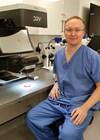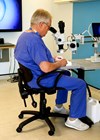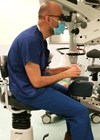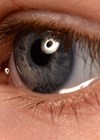Trainees
The value of hospital placements in ophthalmology in general practice specialty training
Pratik Bikkannavar provides insights into the potential benefits a placement in ophthalmology provides General Practice Specialty Trainees (GPSTs) and its valuable purpose for the wider ophthalmic community. Ophthalmic complaints are known to account for up to 1 in every 20...
Broadening horizons in ophthalmology: crafting a varied elective experience
The elective period for medical students is a unique opportunity to immerse oneself in a field of interest. For students interested in ophthalmology, this can offer a dedicated experience for what can otherwise be quite limited through undergraduate rotations. Alongside...
How to maximise points for your ophthalmology portfolio as a medical student
Ophthalmology is an extremely popular and competitive career option, with one of the highest competition ratios at ST1 level entry (10:1 in 2023) [1]. It is also a highly rewarding speciality, involving: a mixture of medicine and surgery in a...
Burnout: ubiquitous and unavoidable?
Meriam Islam reminds us of the importance of ‘putting our oxygen mask on first’ and avoiding burnout while we progress through our careers. Burnout. It’s a term we hear a lot. What does it mean though? According to Merriam Webster,...
Immunoglobulin G4-related ophthalmic disease – what is it? (Part 1)
Part 1: Epidemiology, classification, radiology, histopathology and associations (see Part 2 here) In this two-part series, Li Yen Goh reviews IgG4 disease and reminds us of diagnostic challenges faced. Introduction Immunoglobulin G4 (IgG4) disease is a recently recognised idiopathic systemic...
Myopia management
With the growing prevalence of myopia at epidemic levels in some countries and increasing number of research publications on myopia control, there is a lot of controversy regarding the management of myopia. As none of them are at present available...
Glasgow eye department continues to disrupt ocular simulation training through novel DRV system - the first of many?
Ongoing technological developments are enabling continuous progress to be made across all aspects of medical simulation training. This is particularly true within the field of ophthalmology, where surgical training advancements have enabled the role of simulation to expand dramatically over...
The 2021-2022 ophthalmology ST1 application process
Harry Rosen updates us on what is involved in the current UK Ophthalmology Specialist Training (OST) programme application process. The process of applying to the UK Ophthalmology Specialist Training (OST) programme is constantly changing each year, adapting to the needs...
COMMENT ON: Watch your back: Ergonomics and Ophthalmology
Jim Innes. Dear Editors, I write to congratulate Aadil Hussain on his excellent Trainees article “Watch your back: Ergonomics and Ophthalmology”. Please can I reassure him that, at least in the Yorkshire School of Ophthalmology, the importance of good posture...
Watch your back: Ergonomics and Ophthalmology
Aadil Hussain discusses an ophthalmologist’s risk of musculoskeletal injury and highlights the importance of ergonomics education, to ensure a pain-free career. Chronic and disabling musculoskeletal injury has been identified in the field of ophthalmology with increasing prevalence. The ophthalmologist is...
A case of congenital lacrimal fistula: an overview of diagnosis and management
Shivam Goyal and Kyaw Htun Aye describe the challenges of dealing with a rare case of congenitial lacrimal fistula.We present a case of a 19-month-old baby with a congenital abnormality. Congenital lacrimal fistulae are a spot diagnosis due to its...
Ocular bubbly: a vitreoretinal update on the art of gases
The authors remind us of the revolutionary impact gases have had on retinal surgery. In 1938, Rosengren attempted to improve his retina repair surgical outcomes [1]. He discovered that suturing the retina or pressing externally on the sclera were not...















